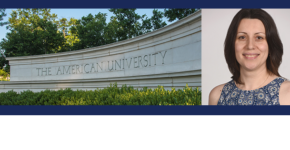 You don’t have look overseas for people who are going hungry.
You don’t have look overseas for people who are going hungry.
Anna Amirkhanyan, associate professor of public administration at American University, explores food insecure populations closer to home.
Professor Amirkhanyan’s research focuses on public and nonprofit management, organizational performance, public-private differences, and citizen participation. Her articles have been published in various outlets such as the Journal of Public Administration Research and Theory (J-PART), Public Administration Review, the Journal of Policy Analysis and Management, the Nonprofit and Voluntary Sector Quarterly, and others. Professor Amirkhanyan has received 2006 National Association of Schools of Public Affairs and Administration Annual Dissertation Award, 2007 SPA Award for Outstanding Service to the University Community, and 2008 SPA Faculty Award for Outstanding Teaching, and 2017 SPA Pioneer Award. She served on the Board of Directors of the Public Management Research Association, and is on the Editorial Board of J-PART.
Food Insecurity
When we think of hunger, we mostly think of third-world countries. However, food insecurity is a serious problem in the United States. Today, more than 40 million Americans receive food stamp benefits totaling $70 Billion annually. Millions more get help from nonprofit food assistance programs.
While these numbers are informative, many researchers and lawmakers still don’t know much about the people affected by food insecurity.
My colleagues and I sought to document the experiences of a group that has not been extensively studied: American families that rely on both federal and charitable food assistance.
Our findings highlight a precarious conundrum facing these individuals and their families.
On the one hand, about 60 percent of households we studied faced serious health conditions, such as heart disease or diabetes. These conditions added costs to their food bill and required dietary adjustments to manage the impact of these diseases.
On the other hand, contrary to the common assumptions made about people on welfare, those we interviewed were deliberate and strategic in how they purchased and prepared food. Using coupons and store promotions, choosing inexpensive items, buying in bulk, portioning dishes to make them last, and even limiting food intake were just a few of the many strategies people used to cope with the shortage of food.
This creates a vicious cycle in which the coping strategies can undermine the quantity and the quality of food that people consume and may worsen their heath and wellbeing. Our study underscores the importance of both the federal and charitable safety net programs, and the need to strengthen the support for families facing food insecurity.

Comments
2 responses to “Anna Amirkhanyan, American University – Food Insecurity”
Great outline of domestic food insecurity – she gave clarity to a vague, misunderstood, but serious issue.
Thanks.A rich nation should not let its people starve . Happy 4 Th. Of July.
To you & the bread basket to the ?